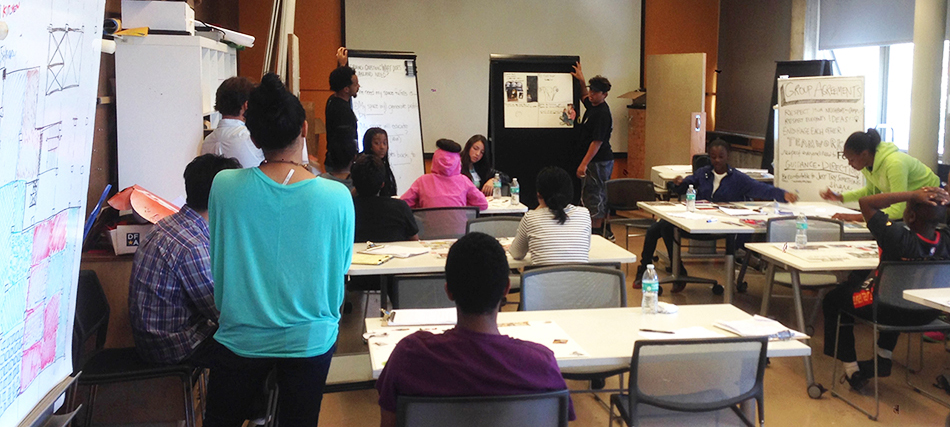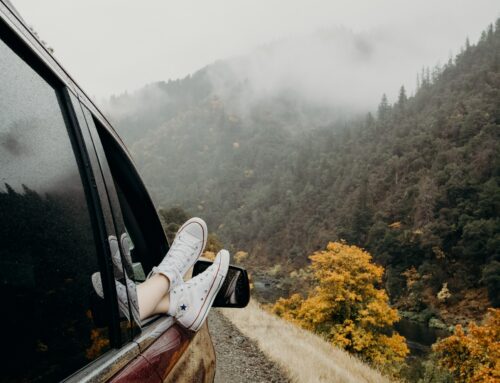In June I was fortunate to be able to take part in the third annual Youth Architecture Camp for underrepresented and at-risk children. The camp was started from a collaboration between the AIA East Bay and Fam First Family Foundation as a way to introduce Architecture and design in general to youth in the East Bay. While I was only able to attend one full day and the final presentations, I was truly taken back by the amount of enthusiasm the kids showed. We were lucky enough to be able to provide this opportunity for them, and without hesitating they took full advantage.

Camp Day
The full day that I attended was a busy one reminding me of Architecture School. We started off working on a structure with the only goal of being 12′ tall and made out of rolled paper. This project was simply to stay busy before everyone arrived. After showing them that triangles and pyramids create stable structures, we moved onto the next activity. To warm up we sketched from inspirational words and pictures. The words challenged the students to think more abstractly, forcing them to think of an image from a word. After challenging them to sketching, we proposed four questions for them to turn into an inspirational concept board. The four questions not only related to design, but focused on how to improve Oakland by giving back, providing education, and also create a form of revenue. With this, we had them come up with a project proposal and create collages of what they envision seeing their space becoming. By the end of the day each camper was on their way to proposing what they thought Oakland needs. I left the camp that day knowing that the kids were not only having fun, but solving issues through design.

Presentation Day
On the final day the campers presented their ideas to the volunteers, special guests, and their parents. Previously the campers had presented to their peers and volunteers, but never in front of a crowd in the lobby of Wurster Hall. To my surprise every camper, even the shy ones, got up without hesitating and presented their project. Even when asked difficult questions none of them broke down (something I’ve seen people in college do). I truly believe the camp will have a positive lasting impact, not only on the campers, but also on the volunteers like myself. I plan on being back next year, and having an even larger role.


